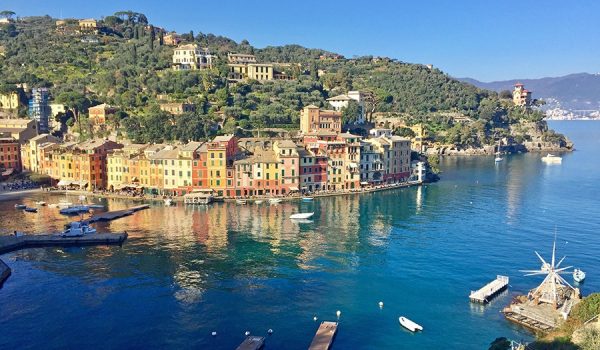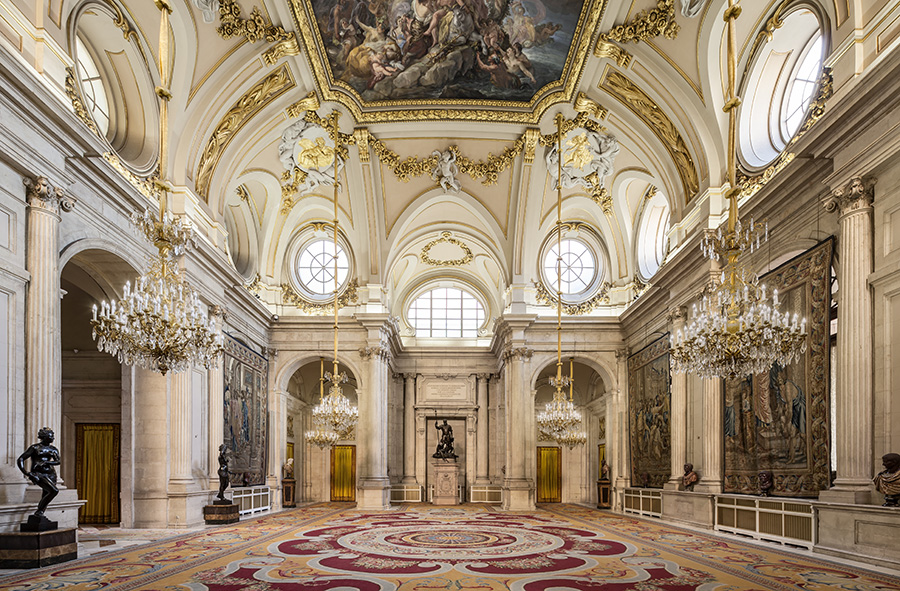After having spent at least a couple of days to visit Genoa it would be great to have time enough to explore its neighbourhoods. Indeed, Liguria offers beautiful medieval sea villages with Blue Flag beaches, relaxing panoramic walks along coastal paths, gardens and trekkings in areas such as Monte Antola Natural Park or Beigua Park.
What to do and see next to Genoa
All the places mentioned here are easily reachable by bus or train so are perfect for those that want to explore Liguria without a car. The list below is based on the distance from Genoa and travel journeys related (1h 30min maximum each way).
1. Torriglia
Situated only 30 minutes from Genoa, Torriglia (769 metres above sea level) is surrounded by mountains, woods and waterways.
The castle that dominates the township is an ancient fortification already mentioned in some documents from 1153. The building had a key role during Medieval Period to control trades between Genoa and inner areas. Torriglia is also famous for Canestrelli, typical butter biscuits whose production dates back to 1500s.
While walking across the town centre you may spot a painting portraying the “Bella di Torriglia”, a beautiful and misterious woman whose identity was unknown. Indeed, a popular quote says:
“You are like the Bella di Torriglia, everyone wants her but nobody gets her.”
The town is located in the “Antola Regional Natural Park” so it is the perfect destination for trekking enthusiasts as there are many trails around it. I personally recommend the paths to Monte Spigo and Monte Lavagnola.
Local bus service n. 25 connects Genoa to Torriglia departing from the square in front of Brignole Railway Station. Journey time is about one hour, tickets can be purchased at kiosks (3€, one way) or directly on board but with a supplement (6€, one way).

2. The Genoese thermal baths
The municipality of Mele is located at the foot of the Ligurian Apennine and within a short distance from Genoa. This little village and especially the district of Acquasanta is renowned for local healing waters with therapeutic virtues.
The first Genoese thermal baths was built between 1830-1832 and the tanks used today are still the original ones. The Nostra Signora dell’Acquasanta sanctuary (15th century) stands few meters away from the Spa and it has always been and important place of worship as well as a destination for pilgrims. Next to the thermal baths you can also visit the Museo della Carta, in which part of the original machineries is preserved and the craft paper mill shows you a handmade production based on ancient methods. Indeed, between 1500s-1600s the paper used in the Spanish and English courts was realized here.
You can reach Acquasanta from Genoa by bus, services n. 100 and 101/ from Genoa Voltri Railway Station, or by train from Genoa Brignole (please check Trenitalia website).
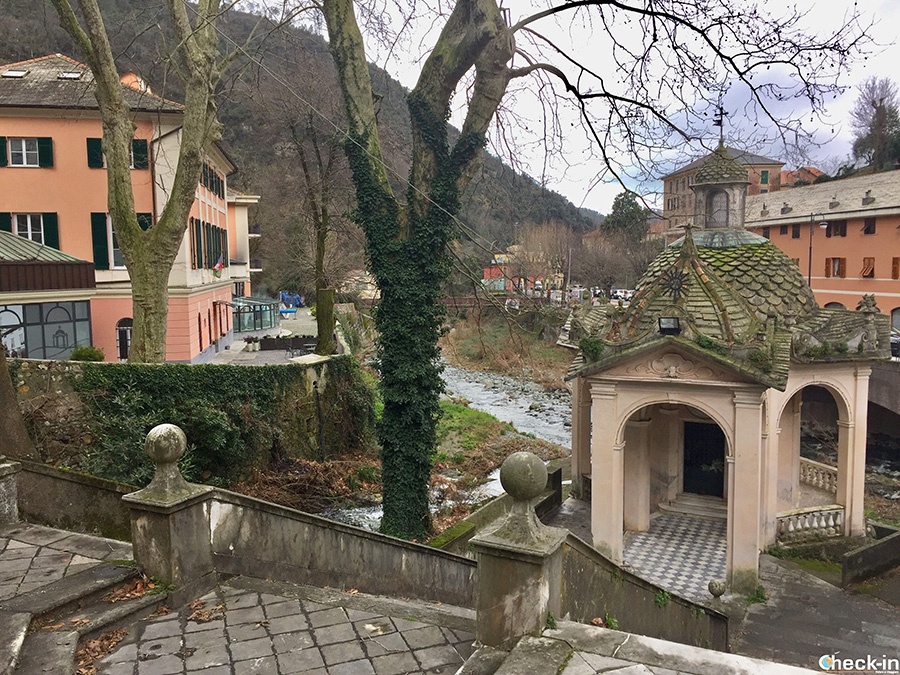
3. Arenzano, the gateway to the Western Coast
Nestled between the Apennines and the Mediterranean Sea, this small seaside village marks the beginning of the western Ligurian Riviera and boasts an important historical-artistic heritage.
Villa Negrotto Cambiaso was originally a watchtower but in the 16th century the Pallavicino noble family decided to enlarge it. Then, at the end of the 19th century the villa and the fields were completely refurbished. Today it is the seat of the municipality. While exploring its beautiful park you can see old maritime pines, peacocks and a lake with swans.
Arenzano is home to the Santuario del Gesù Bambino di Praga, built in 1904 and popular destination for pilgrims and tourists since then. During the visit I recommend you to see the magnificent permanent artistic Nativity Scene with over 300 ceramics realized in Albisola between 1968-1971.
Villa Figoli is another amazing palace to admire and it is set in an Italian garden park of around 35.000 m2.
Arenzano is an ideal destination for walkers as well. Indeed, they can trek across the Beigua National Park or follow the pedestrian-cycling path built along the old track of the Genoa-Ventimiglia railway line.
You can easily get to Arenzano from Genoa by train.
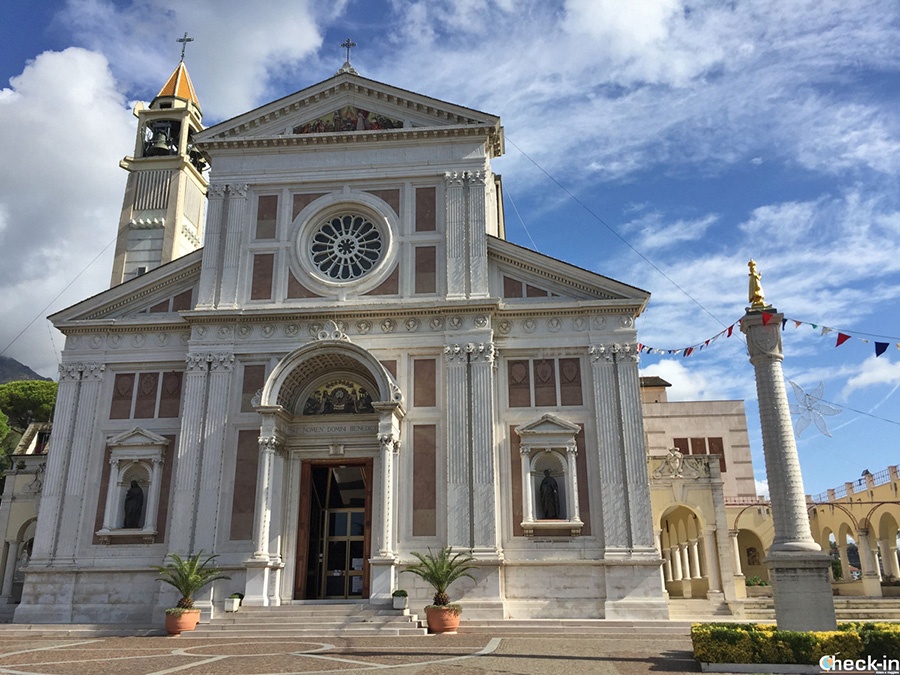
4. Cogoleto, possibly the birthplace of Columbus
It is a small town with long, broad and well equipped beaches. Situated about 30 Km far from Genoa city centre, it is the last municipality of the Genoese province. Since Roman times, its economy has been sustained by the production of lime through local kilns that then was used for example for the fortifications at Calvi in Corsica and for the Palazzo Ducale in Genoa. Fornace Bianchi dates back to 19th century and it is the last kiln remained. It can be visited with guided tours all year round. A series of ceramic tiles scattered through the town centre tells the story of the Ligurian village.
Cogoleto is also known because it declares itself to be the real birthplace of Christopher Columbus and not Genoa. The matter is quite difficult to solve as Columbus lived more than 600 years ago and there are no official documents proving for sure where he was born. Having said that, in the historical centre of Cogoleto it is possible to see Columbus House at n. 64 in via Rati. Indeed, the archives of the townhall confirm that the building was property of his family. Nowadays it is a private house so visits are not allowed but on the facade you can appreciate the 12th century frescoes dedicated to Columbus.
You can arrive to Cogoleto from Genoa by train. Besides that, the recent pedestrian-cycle track connects it to the nearby towns of Arenzano and Varazze.
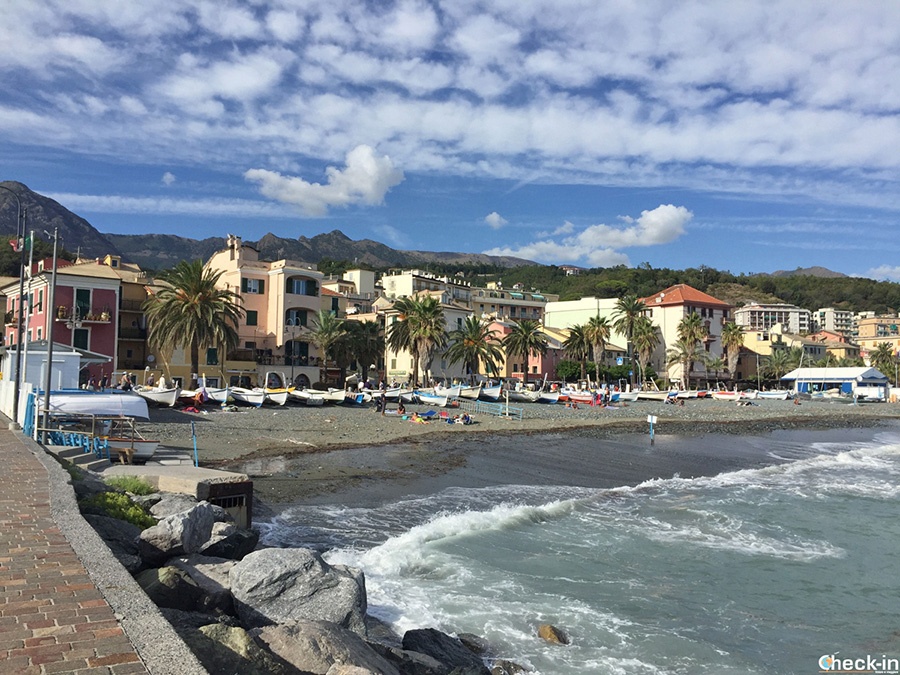
5. Varazze and the “Waterfront Europa”
It is the first municipality of the province of Savona and one of the best known holiday resorts in Liguria. In its lively centre full of shops and small business you can find noble palaces, churches and typical beautiful pastel-colored houses facade.
The “Waterfront Europa” is a stunning coastal path suitable for pedestrians and cyclists that runs along the former railway line headed to Cogoleto. It passes through white and dark rocks, tunnels and little bays. The Marina di Varazze is a new area inaugurated in 2003 and today it is home to lounge bars, restaurants, fishing tourism, shops. The marina can also accomodates up to 800 boats. In addition to that, another coastal path starts from here to Celle Ligure.
Like Arenzano e Cogoleto, Varazze is part too of Parco Regionale del Beigua, a natural park located between the provinces of Savona and Genoa. It is the largest protected space in Liguria and it was declared a UNESCO Global Geopark in 2015. It is named after Monte Beigua (1287 m) which is the highest mountain of the area. More information about best local treks are available in this website.
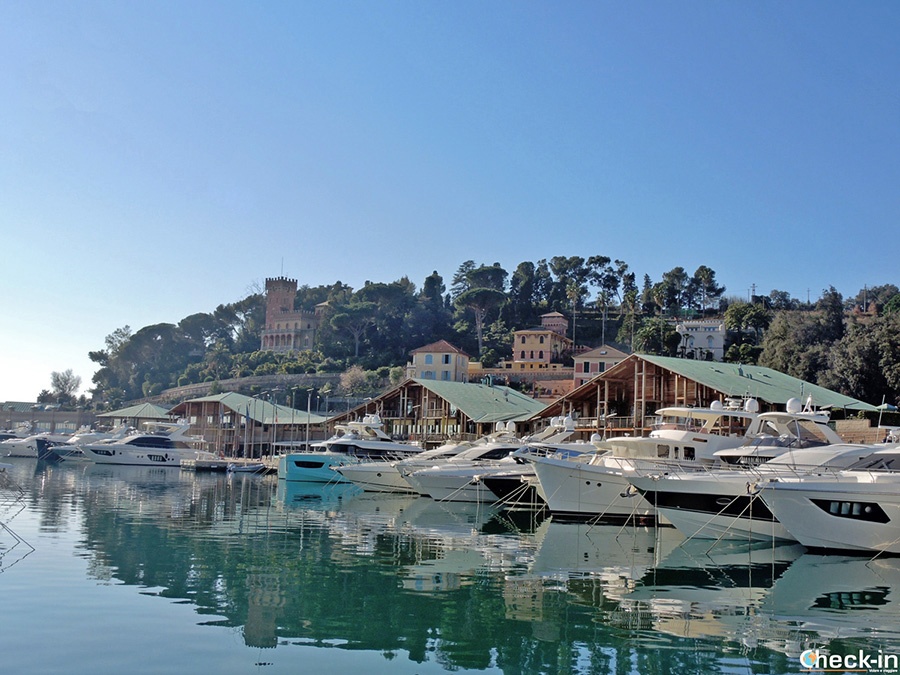
6. Celle Ligure and the “Passeggiata Romana”
With a short walk from Varazze you arrive to Celle Ligure, a little typical seaside village with its colourful houses lined up along the coast. The old town is perfectly into the wonderful seafront where you can also find an outdoor art gallery focused on ceramics.
To get a panoramic view of the Ligurian town and its surroundings I suggest you to walk along an old road called “Romana” which runs on the promontory of Crocetta. In the past this was the only way to reach the neighbouring districts from Celle.
Located near the city centre, the “Bottini pine woods” (Pineta Bottini) is another stunning viewpoint over the coast and it is the perfect place where to relax surrounded by nature and cool air.
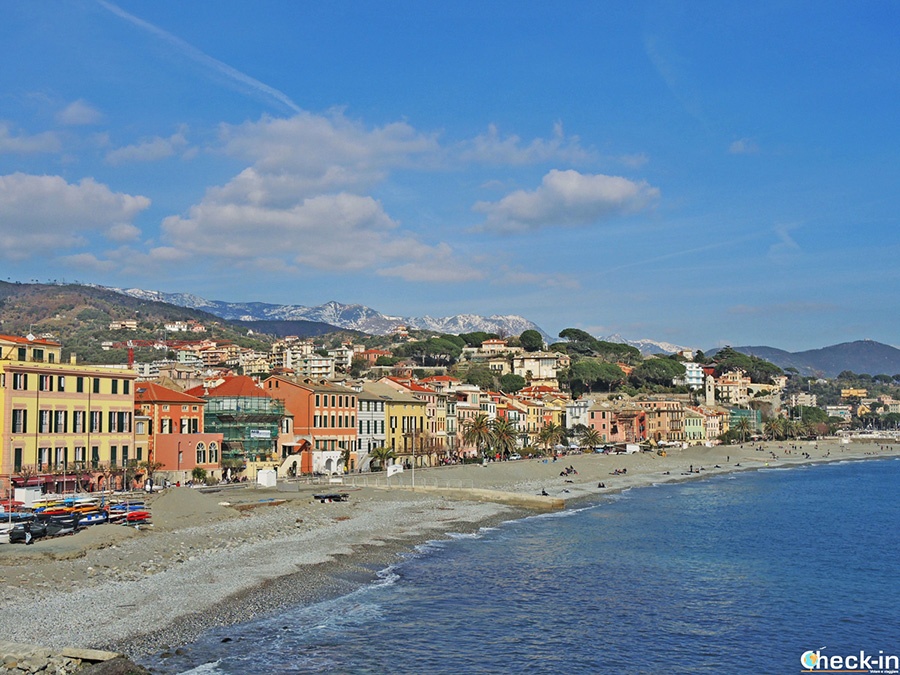
7. The two Albisolas and the “Lungomare degli Artisti”
Albissola Marina and Albisola Superiore are two different towns but with a strong bond between them. Their name are very similar – just an “s” – probably due to a 16th-century transcription error. The centenary traditionf of ceramic art is what has made Albisola famous in the world.
Exploring the town you have the chance to visit workshops and walk along the “Seafront of Artists”. This is an iconic ceramic mosaic paving 800 m long created in 1962 as a tribute to all the artists that have worked in Albissola such as Lucio Fontana and Asger Jorn.
Other places not to be missed are Pozzo Garitta, the heart of the historic centre with its furnaces and art gallery, and Villa Faraggiana, built for the Durazzo family in the 1700s and today open to guided tours that allow visitors to discover architectures and furniture with many original objects and tapestries.
Local train services connect Albissola to Savona and Genoa.
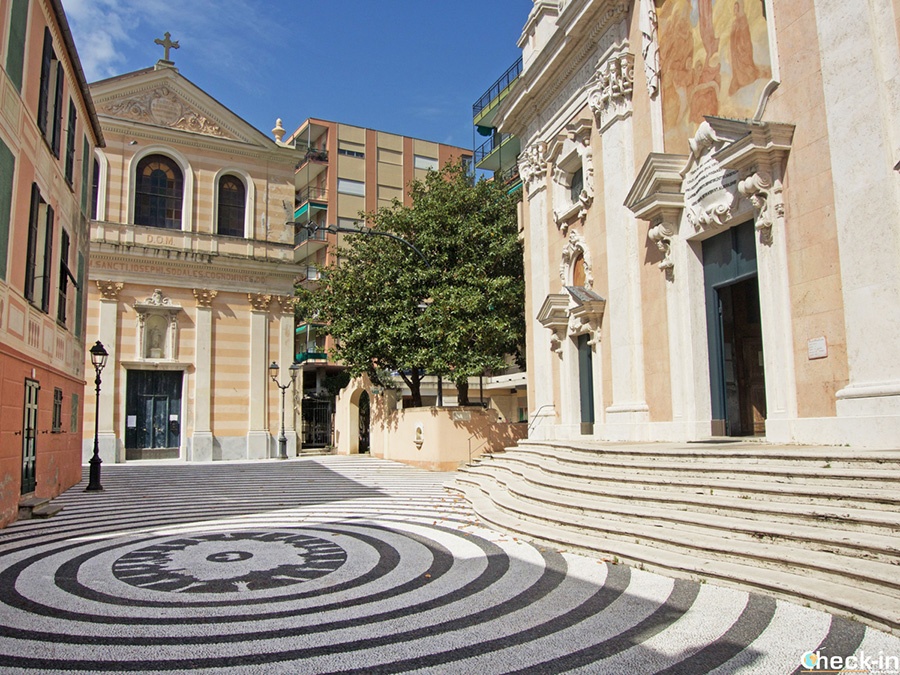
8. Bogliasco and Monte Santa Croce
We now move to Bogliasco, in the East Riviera immediately at the border with the municipality of Genoa (Nervi). It is a typical Ligurian fishing village built around a small sand and pebble beach overlooked by the parish church as well as beautiful pastel-colored houses. For football lovers, the U.C. Sampdoria training ground is located in the district of Poggio.
The best panoramic walk in this area is up to Monte Santa Croce (517 m), named after the small church located on the top of it. From the peak of the hill you have stunning views across the Golfo del Paradiso (Gulf of Paradise). On clear days it is also possible to spot Corsica and the islands of the Tuscan archipelago.
Then you can descend to Pieve Ligure whose old town stretches along the slopes of Monte Santa Croce. This scenic village is famous for mimosas, the yellow flower that spreads its colours over the hillsides at the end of January. It is celebrated here with an important fair attracting visitors from all over Liguria.
The easiest way to reach Bogliasco from Genoa is by regional train.

9. Camogli and San Fruttuoso
This is definitely one of the top days out from Genoa for tourists and Genoeses as well. The historic centre is small and it arose around the picturesque harbour with pastel-colored houses facade. This is why Camogli seafront is considered one of the most beautiful and romantic promenades in Italy.
Situated near the Basilica di S. Maria Assunta, the Dragonara Castle dates back to 12th century and it was built on rocks sheer over the Ligurian Sea as an outpost to protect fthe village rom Saracen invasions.
From Camogli you can reach the famous San Fruttuoso Abbey by foot or by boat. Ferry services are also available from Genoa and Tigullio towns, especially in summer. The abbey was originally a Benedictine monastery that then became a pirate’s hideout. Later it belonged to Doria princes whilst today it is property of Fai (Italian Environmental Association). The building looks out on an amazing bay with a small equipped pebble beach.
Depending on your needs, Camogli can be reached from Genoa by train or by boat.
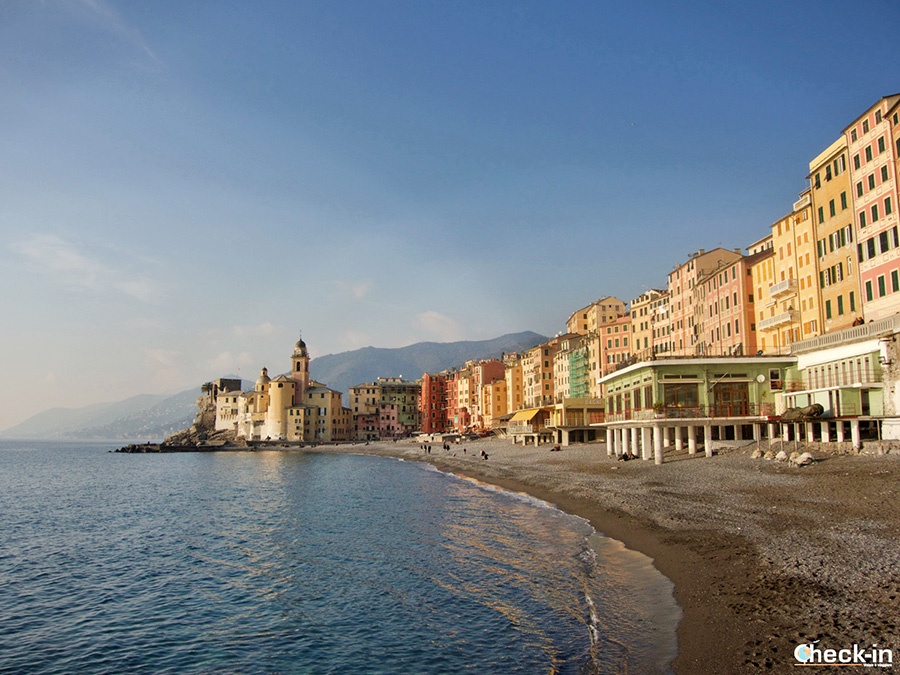
10. Santa Margherita Ligure, Portofino and day tour from Genoa/Milan
These are two very popular destinatiosn in Eastern Liguria for a day trip from Genoa. Indeed, you can get to Santa Margherita by train and then by bus from its Railway Station to Portofino.
Part of Santa Margherita Ligure territory is included in the Regional Natural Park of Portofino. Walking along the seafront you will see the Castle built by the Republic of Genoa in 1550 as defense against the attacks of North African pirates whilst today it is dedicated to the memory of the Italian victims of the Second World War. Villa Durazzo Centurione (17th century) stands close to the fortress and from its Italian garden you have breathtaking views across the Gulf of Tigullio.
Going for a walk instead of taking a bus to Portofino allows you to enjoy a coastal path in one of the most beautiful areas of Liguria. The distance is approx. 5.5 Km but it’s worth a try. After the scenic Paraggi bay you finally arrive to Portofino.
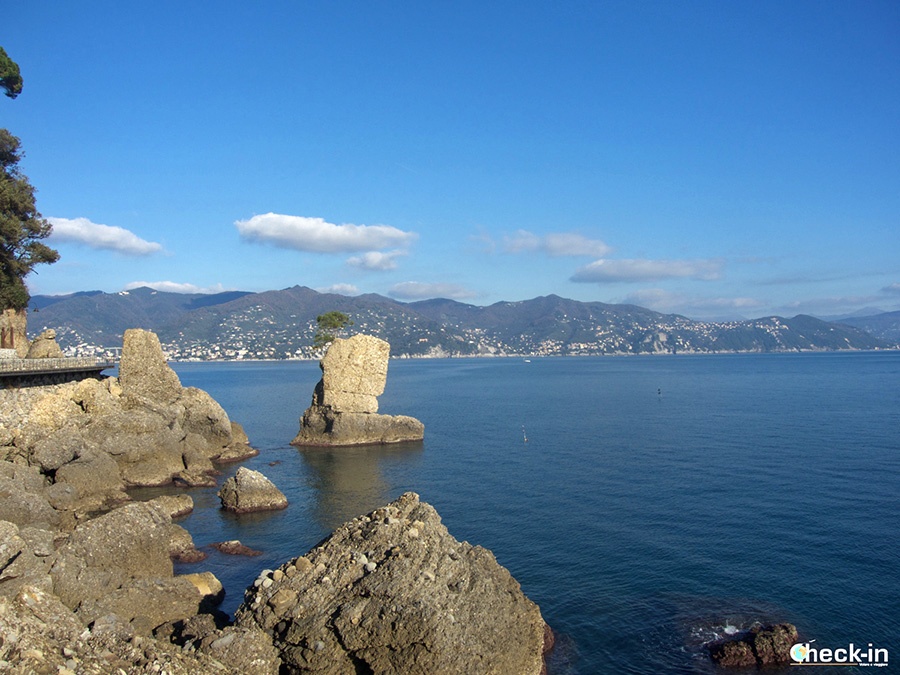
This sea village is renowned all over the world as a synonymous with elegance and dolce vita. The piazzetta stands at the centre of the old town and it is surrounded by colourful houses with many boutiques selling famous international brands. To get the best panorama of Portofino bay I recommend you to walk up to the park around Brown Castle. Others stunning viewpoints in the area are the lighthouse as well as the Chiesa di San Giorgio, the church dedicated to Saint George (patron of the town).
If you want to visit Portofino from Genoa there are full-day tours available. They include a guided tour of Genoa, a roundtrip boat ride from Santa Margherita to Portofino and then free time to explore the village. For more information and online bookings please check this page. Otherwise, for those who are based in Milan there is a dedicated tour that lasts 12 hours with a similar itinerary. All the details are available here.


